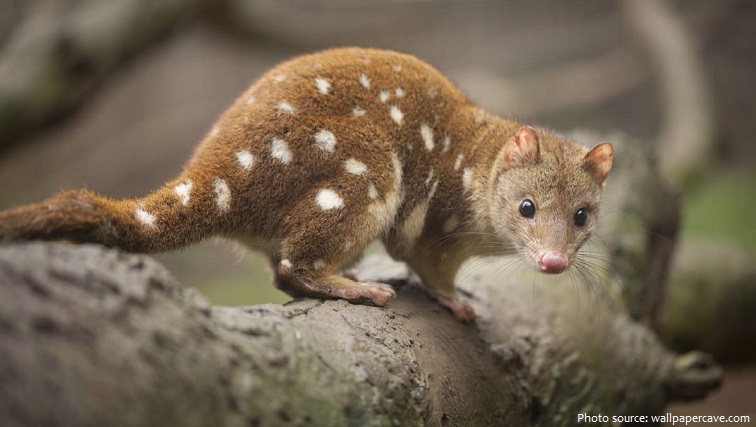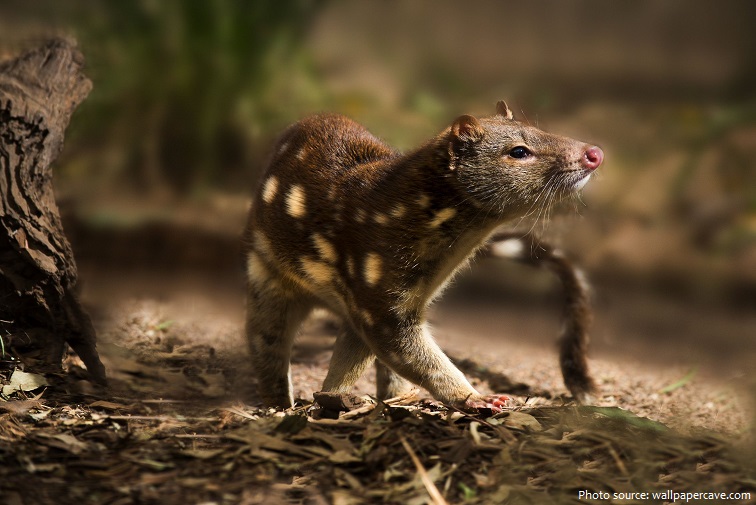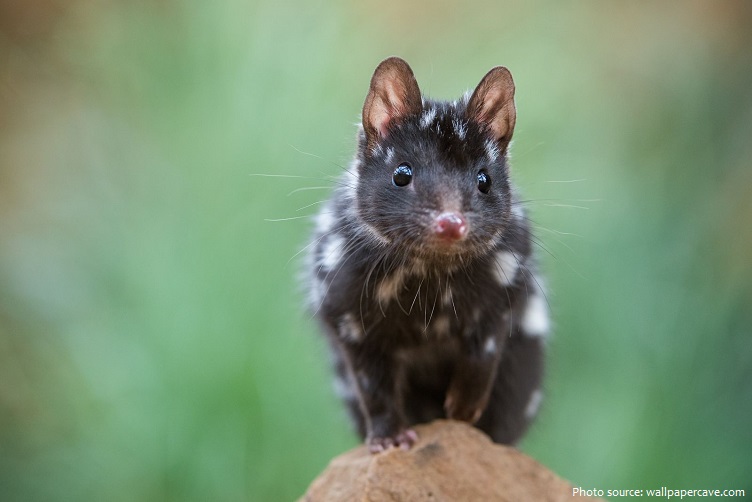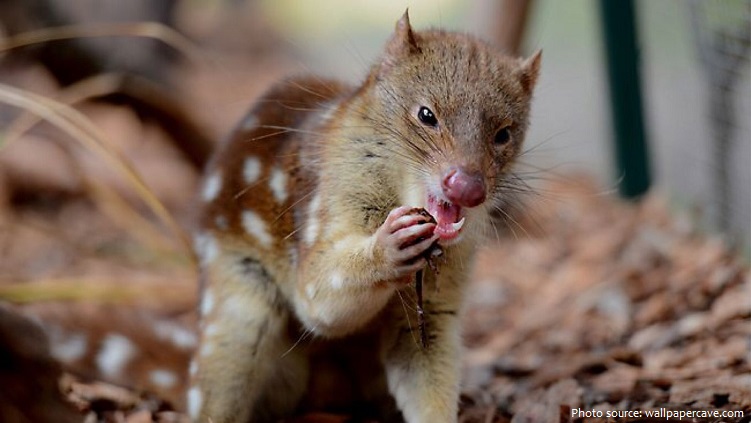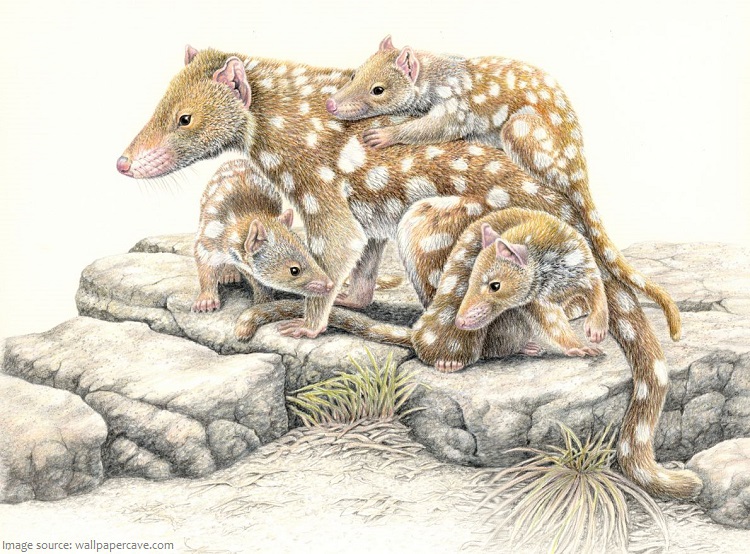Quolls are a catlike carnivorous marsupials.
They belong to the genus Dasyurus. The genus name dasyurus means “hairy tail.”
Quolls are native to mainland Australia, New Guinea, and Tasmania.
They are found in a variety of habitats including forests, woodlands, savannahs, deserts, open pastures and rocky escarpments.
There are six species of quall:
• the bronze quoll (D. spartacus)
• the western quoll or chuditch (D. geoffroii)
• the New Guinean quoll (D. albopunctatus)
• the eastern quoll (D. viverrinus)
• the tiger quoll or spotted tail quoll (D. maculatus)
• the northern quoll (D. hallucatus)
The lifespan of a quolls is from 2 to 5 years in the wild; the larger species tend to live longer than the smaller.
Quolls are between 25 and 75 cm (10 and 29.5 in) long, with hairy tails about 20 to 35 cm (8 to 14 in) long. They weight from 300 g (11 oz) to 7 kg (15 lb).
Their coats are brown or black, with a sparse scattering of white spots. They have bright pink noses and long snouts.
Females develop a pouch during the breeding season, which opens toward the tail (with the exception of the tiger quoll, which has a true pouch) when they are rearing young.
Quolls are primarily solitary animals that hunt at night. During the day they sleep in hollowed-out logs or rocky dens; though on rare occasions they can be seen looking for prey during the day.
Quolls are mostly carnivorous. The smaller quolls primarily eat insects, birds, frogs, lizards and fruit; the larger species eat birds, reptiles, and mammals, including echidnas, possums, rabbits and hares.
They can obtain all the water they need from their food, making them quite adaptable during droughts or other periods of water shortage.
Quolls are primarily terrestrial, but are capable of climbing as well.
Quolls generally breed during winter. The gestation period is 21 days. Being marsupials, quoll young (pups) spend the first part of their lives in a pouch. A baby quoll, or pup, is the size of a grain of rice. Females have between five and eight pups per litter.
In 1770, Captain Cook collected quolls on his exploration of the east coast of Australia, adopting the Aboriginal name for the animals.
They were likened in appearance to a polecat or marten in the earliest reports, the tiger quoll being called “spotted marten” and eastern quoll “spotted opossum”, but by 1804, the names “native cat” and “tiger cat” had been adopted by early settlers; quolls are still called “marsupial cats”.
In the 1960s, noted naturalist David Fleay pushed for the revival of the term “quoll” to replace the then-current vernacular names that he felt were misleading. They are very well known animals in Australia.
All species have drastically declined in numbers since Australasia was colonised by Europeans, with one species, the eastern quoll, becoming extinct on the Australian mainland, now found only in Tasmania.
The primary threats to quolls are habitat loss and fragmentation.
Cane toads were introduced into Queensland in 1935; their numbers have since grown exponentially. These poisonous toads pose a significant threat to the northern quoll, which may die after consuming one.
